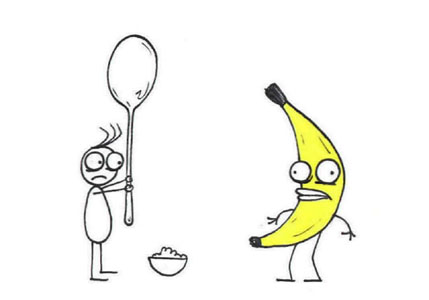#264 - It's Such a Beautiful Day
Don Hertzfeldt, 2012

A compilation of three short films that all focus on Bill, a seemingly normal everyman whose typical malaise over the mundanity of everyday life is exacerbated when he has a serious health scare.
Good God.
Prior to watching
It's Such a Beautiful Day, my only experience with the works of Don Hertzfeldt had been watching his notorious Oscar-nominated short film
Rejected (about a handful of darkly humourous and surreal television spots that had been rejected from the network that had requested them) a few years ago - even then, I had been aware of some of its more...shall we say "memorable" scenes thanks to GIFs scattered across the Internet. I sort of forgot about him until I started noticing recently that
It's Such a Beautiful Day had been earning some considerable acclaim and was being cited as one of the greatest films of the 2010s (despite technically being a compilation where two of the three segments predate 2010, but hey, if it counts, it counts). It's only an hour long or so, so I figured that I'd give it a try and see what the deal was.
What a deal.
It's Such a Beautiful Day consists of three chapters. Chapter One,
Everything Will Be OK, introduces viewers to the life of Bill, a seemingly ordinary man who is trying to live his life despite the fact that he is clearly struggling with mental illness. Though Bill remains high-functioning in the face of increasingly intrusive thoughts that are preoccupied with the inherent sadness of life's more mundane aspects, he really gets thrown for a loop when he has a health scare that weakens what little resolve he still has. Chapter Two,
I Am So Proud of You, is mostly a flashback that develops not just Bill's childhood but also goes back several generations into his family history, weaving tale after tale of everyday insanity. Chapter Three,
It's Such a Beautiful Day...well, I actually don't think I want to discuss it in specific detail at this point. If this review intrigues you enough to check out the full film then you will probably be glad I didn't.
Despite being only an hour in length,
It's Such a Beautiful Day packs so much into its brief running time that it honestly feels so much larger than it actually is. Hertzfeldt's simplistic and near-identical character models (the main thing distinguishing Bill is his hat) make perfect sense given the film's insight into a neurodivergent mindset, plus it also makes for the plainest method for depicting countless instances of depressing, horrifying images. The animation itself is aided by a lot of avant-garde techniques such as multi-screen editing, frequent inter-cutting with real-life footage and photographs, extremely disorienting sound design, and many other things that perfectly reflect the disorder in the minds of Bill and the people around him. The whole film is narrated by an uncredited Hertzfeldt, whose lilting air of apparent disinterest in what he's describing makes for the ideal voice-over to describe the characters' quiet despair and the various disturbing events of the film. The film is simply phenomenal at sucking you down into this dark, dire world and making you feel for its hat-wearing protagonist as he goes through a variety of nightmarish yet mundane perils and vibrant (but no less disconcerting) fantasies.
It's Such a Beautiful Day is undoubtedly one of the most powerful films I've watched in the past few years. In the space of an hour, it manages to effectively communicate what it's like to cope with chronic mental illness that makes everyday life a miserable existence even without the promise of physical distress and death - this is a promise that the film frequently makes good upon. This is most definitely not a film for the sensitive - even if you can handle the film's tendency towards flashy experimentation that frequently feels like deliberate sensory abuse, the film's many meditations on subjects like depression, time, aging, death, fate, and so on and so forth can be genuinely overwhelming on both mental and emotional levels. If you feel like you can handle it,
It's Such a Beautiful Day really is an astonishing piece of work. It's visually creative, filled with bizarre profundity that isn't as tone-deaf as you'd expect from the man responsible for
Rejected, and is able to strike an emotional chord despite (or perhaps because of) its extremely basic stick-figure design. People who have been following my ratings for a while will know that I try not to give a film more than four popcorn boxes out of five on the first viewing. To give you an idea of just how much I liked this film...well, see for yourselves.
It's such a beautiful day.






 But +rep for watching it.
But +rep for watching it.


